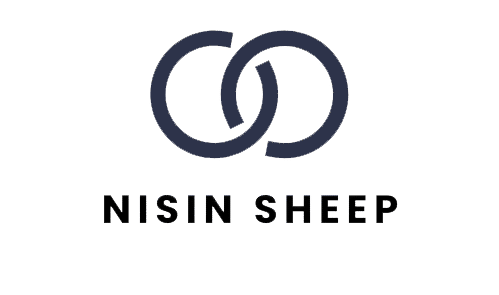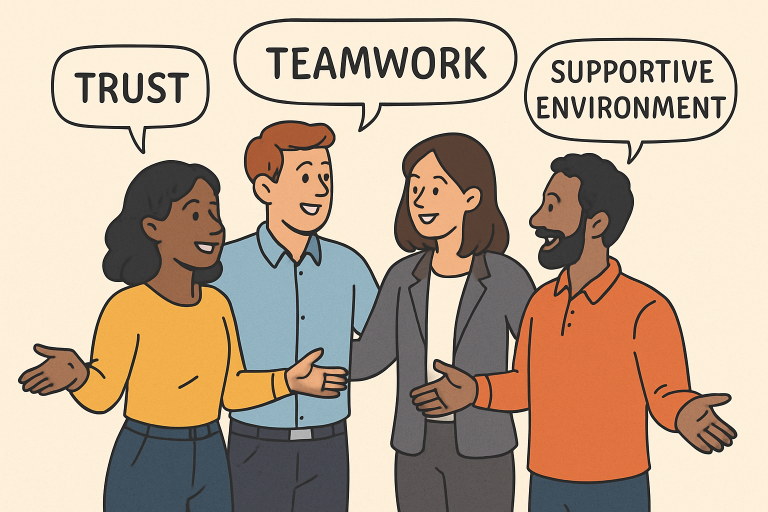Key Takeaways
- Transparent communication is fundamental to building trust.
- Accountability strengthens team cohesion and reliability.
- Genuine relationships among team members foster a supportive environment.
- Encouraging prudent risk-taking promotes innovation and growth.
Table of Contents
- Transparent Communication: The Foundation of Trust
- Promoting Accountability Across All Levels
- Fostering Genuine Relationships Among Team Members
- Encouraging Prudent Risk-Taking and Innovation
- Implementing Continuous Feedback Mechanisms
- Case Study: Rebuilding Trust After Organizational Change
- Conclusion
In an era where adaptability, collaboration, and resilience are critical, high-trust teams are the true differentiators of organizational longevity and growth. Creating teams characterized by trust not only accelerates productivity but also strengthens employee well-being, engagement, and innovation. Leaders who invest in shaping trust-filled cultures provide a competitive advantage that lasts. Organizations seeking to drive these outcomes often turn to expert executive growth and coaching programs to instill and sustain these essential values.
Trust is at the heart of effective communication, accountability, and relationship-building. Employees thrive when they feel aligned with leadership and empowered to make meaningful contributions. Without trust, even the most skilled teams struggle with morale, collaboration, and decision-making. The foundation laid by trust fuels the agility and spirit required to take prudent risks. To foster this environment, leaders must practice transparency as a daily commitment, not a periodic intervention.
Transparent Communication: The Foundation of Trust
Consistent and open communication lies at the heart of high-trust teams. Effective leaders establish regular channels, such as weekly forums, all-hands briefings, or transparent email updates, to ensure every member feels informed and in the loop. Sharing both successes and challenges, as well as company goals and individual progress, fosters a sense of belonging and reduces ambiguity. When employees know what to expect and have access to timely, accurate information, it eliminates fear and speculation, which erodes trust. Empowering staff to ask questions or raise concerns during these sessions reinforces mutual respect and dialogue.
Beyond structured updates, organizations should invest in interactive tools and platforms that facilitate two-way communication. This openness enables leaders to gauge employee sentiment, identify issues before they escalate, and clarify strategic priorities.
Promoting Accountability Across All Levels
Trust isn’t fostered by words alone; actions matter. Clearly defined roles and responsibilities set expectations for performance and behavior. Leaders who “walk the talk,” consistently honoring their commitments, serve as ethical models for teams. Equally, employees who take ownership of their projects and outcomes bolster a collective sense of dependability. Regular check-ins, performance metrics, and transparency in recognizing both strengths and opportunities for improvement help sustain accountability. Teams that candidly discuss missteps or missed goals are more likely to bounce back and trust each other with more significant responsibilities. By encouraging personal responsibility and celebrating team achievements, a virtuous cycle of trust and ownership emerges. If leaders fail to hold themselves and others accountable, cynicism and disengagement can creep in, undermining trust at every level.
Fostering Genuine Relationships Among Team Members
Relationships rooted in authenticity create a safety net that fosters creativity and collaboration. Leaders should regularly connect with individual team members through one-on-one conversations, mentorship, and informal gatherings to foster a sense of community and support. Learning about people’s strengths, career aspirations, and personal challenges demonstrates empathy and commitment. Intentional relationship-building goes beyond mere icebreakers; it’s about fostering a psychologically safe space where everyone feels they can share ideas, ask for help, or admit mistakes without fear of reprisal. Cultivating inclusive and diverse teams, while encouraging open-mindedness, strengthens the network of trust. Acts of recognition, both formal and informal, reinforce the value each person brings. Team bonding activities, cross-functional projects, and virtual hangouts can also deepen camaraderie and further break down silos common in large organizations.
Encouraging Prudent Risk-Taking and Innovation
Organizations that wish to remain agile in competitive markets must empower teams to experiment and innovate. Trust emboldens employees to take calculated risks, test new ideas, and challenge the status quo without fear of undue criticism. Leaders play a pivotal role by framing failures as learning moments and actively seeking suggestions from all team members. This approach not only sparks creativity but also signals that everyone’s contribution matters.
Structured brainstorming, pilot projects, and “fail fast” initiatives help normalize the process of trial and error. Companies with high innovation scores often credit their cultures of psychological safety, one where questions and dissent are welcomed, rather than suppressed.
Implementing Continuous Feedback Mechanisms
Effective feedback systems are essential for refining team performance and growing trust. These mechanisms range from formal reviews and 360-degree assessments to informal check-ins and peer recognition. When feedback is regular and framed constructively, it spurs ongoing development. Leaders should prioritize clarity over criticism, set up regular review cycles, and encourage honest reflection on successes and setbacks.
Connecting feedback to broader business outcomes motivates individuals to strive for personal and collective growth. Recognizing milestones and progress reinforces positive behaviors, further cementing the fabric of trust within the team.
Case Study: Rebuilding Trust After Organizational Change
In one notable example, a mid-sized technology company saw a decline in employee engagement following a significant restructuring. Uncertainty and rumors had undermined trust in leadership. To restore confidence, the CEO initiated open forums where staff could vent concerns and propose solutions for clearer role definitions. Leadership recognized resilience and transparently shared both the vision and the realities of the transition. Over the course of six months, engagement scores rose by 20%, while retention stabilized, illustrating the power of transparency, co-creation, and authentic leadership in regaining trust.
Conclusion
Building high-trust teams isn’t a one-time initiative but a cultural journey powered by transparency, accountability, genuine connection, and safe risk-taking. Organizations that lead with these values adapt more quickly, innovate more frequently, and retain top talent through every change and challenge. By prioritizing these principles and leveraging resources such as executive growth and coaching programs, organizations can secure a sustainable advantage, instilling resilience and high performance deep within their teams.

